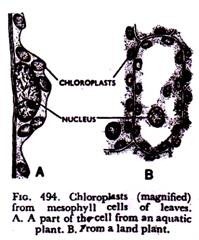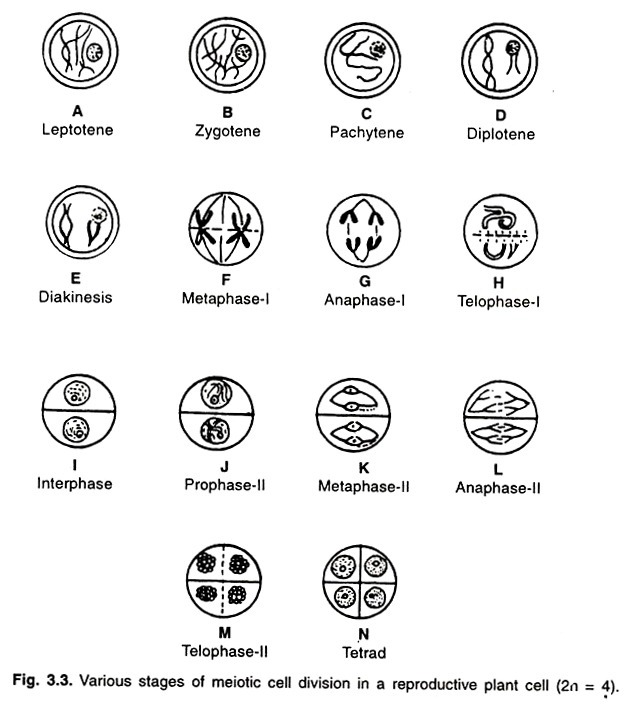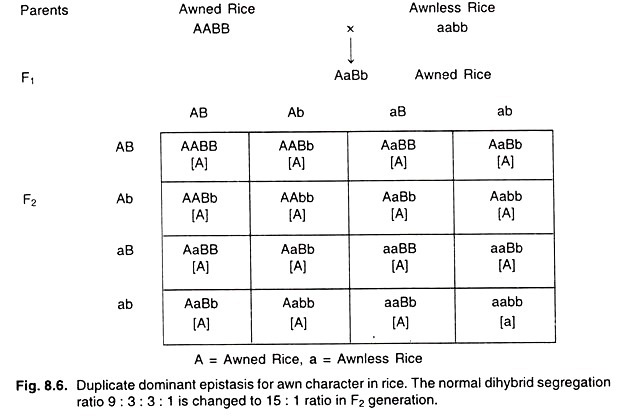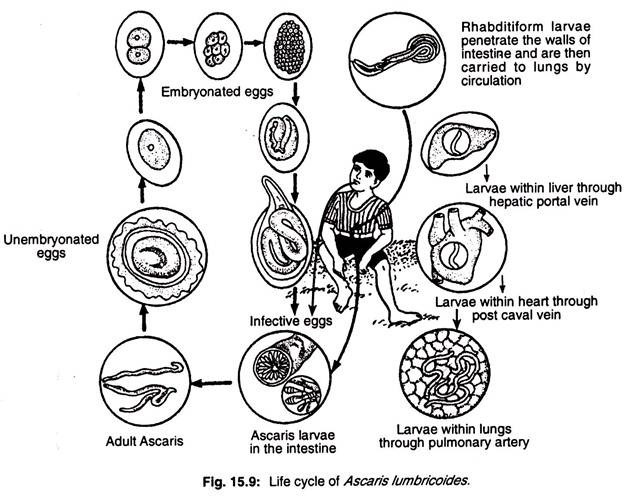ADVERTISEMENTS:
1. Haemophilia:
It is commonly known as bleeder’s disease. It is a sex linked disease first studied by John Cotto in 1803.
Generally male individuals are the victim of this disease.
Due to the absence of antihaemophiliac globulin (in case of haemophilia-A) or plasma thromboplastin (haemophilia-B) in the blood the patient bleeds for hours (in normal man it takes 2-8 minutes to clot) even from a minor cut.
ADVERTISEMENTS:
As a result of continuous bleeding, the patient may die of blood loss. Although there is no permanent remedy of this disease, transfusion of normal blood helps in checking bleeding by providing required blood clotting factors. For patients suffering from haemophilia A antihaemophiliac globulin is available.
Haemophilia (= hemophilia) is caused by a sex-linked recessive gene h located in the X-chromosome. The gene h fails to produce necessary factor for quick clotting. A female becomes haemaphilic only when both the X-chromosomes carry the gene h (XhXh). Such females generally die before birth because of combination of these two recessive alleles which produce lethal condition.
A female possessing only one allele for haemophilia (XXh) appears to be normal as the normal gene in the X dominates the h. Such females are known as carriers. In case of male the recessive gene h on the X expresses itself as the Y chromosome is devoid of any corresponding allele (XhY).
The pedigree study of haemophilia was first made by Haldane in the royal families of Europe. The pedigree started from Queen Victoria in the last century. The ancestors of the queen did not have the disease. It appears that the gene for haemophilia developed either in the germ cells of her father or herself through mutation.
ADVERTISEMENTS:
Like other sex-linked genes the gene for haemophilia shows criss-cross inheritance as follows:
A Carrier Woman marries a Normal man. A carrier Woman for haemophilia (XXh) (Fig. 5.27) marries a normal man. The carrier woman produces ova of two types, one with X and other with Xh. The normal male also produces sperms of two types, one with X and other with Y chromosome.
The marriage can produce four types of children of combinations XX, XXh, XhY, XY (Fig. 5.27). Among the daughters 50% are normal and the remaining 50% are carriers. Among the sons 50% are normal and rest 50% arc haemophilic. The carrier daughters are normal but transmits their haemophilic gene to 50% their children. If a haemophilic man (XhY) marries a normal woman (XX) all the daughters are carriers as they receive one Xh from their lather whereas all the sons are normal as they receive X from their mother (Fig. 5.28).
A marriage between a carrier woman and a haemophilic man produces 50% sons normal and remaining 50% sons are haemophilic (Fig. 5.29). Among the daughters 50% are carriers and the remaining 50% are haemophilic and dies.
Two types of haemophilia are observed:
Haemophilia A:
ADVERTISEMENTS:
It is the most common type occurring in four-fifth of the cases of haemophilia. It is characterised by the absence of antihaemophilic globulin or factor VIII. Haemophilia B or chistmas disease (after the family in which it was first described in detail) results from a defect in Plasma Thromboplastic component (PTC or Factor IX).
2. Sickle-Cell Anaemia:
It is a genetic disease of human beings, found especially in Negroes. This disease is caused by a recessive gene Hbs. The normal gene HbA present on chromosome 11 has undergone mutation to produce the recessive Hbs gene which cause sickle-cell anaemia in homozygous condition (Hbs Hbs) and the patient dies. In heterozygous condition (HbA Hbs) the patient survives, only few R.B.Cs are affected. The R.B.Cs in this disease become sickle-shaped in venous blood owing to the lower concentration of oxygen. This causes rupture of cells and severe haemolytic anaemia.
Haemoglobin is a conjugate protein of heme and globulin. It is formed of about 600 amino acids, two identical a chains and two identical β chains. The sixth amino acid in chain of normal haemoglobin is glutamic acid. In sickle-cell haemoglobin glutamic acid is replaced by valine. The children homozygous for sickle-cell gene (HbsHbs) produce rigid chains. When oxygen level of blood drops below certain level, R.B.Cs undergo sickling.
Such cells do not transport oxygen efficiently they are removed by spleen causing severe anaemia. Individuals with HbAHbA genotype are normal, those with HbsHbs genotype have sickle-cell disease and those with HbAHBs geno-type have the sickle-cell trait. Two individual with sickle-cell trait can produce children with all three phenotypes. Individuals of sickle-cell trait are immune to malaria.
3. Phenylketonuria (PKU):
This genetic disease was discovered by the Norwegian physician A. Foiling in 1934. It is a single gene disorder caused by the mutation (= change) of a gene on chromosome 12. PKU results when there is deficiency of liver enzyme phenylalanine hydroxylase which converts phenylalanine (an amino acid) into tyrosine (amino acid). Thus, there is high level of phenyl alanine in the blood and tissue fluid of the patient causing disease.
Lack of enzyme phenyl alanine hydroxylase (an inborn metabolic disorder) is due to the homozygous recessive gene. Affected babies are normal at birth but within a few weeks there is rise in plasma phenylalanine level which damages the development of brain. Generally by six months severe mental retardation is observed. If these affected children are not treated properly one third of them are unable to walk and two-thirds cannot talk.
Besides mental retardation other symptoms of the disease include decreased pigmentation of hair and skin and eczema. Large amount of phenylalanine and its metabolites although excreted through urine and sweat, their excess accumulation damages the brain. The heterozygous individuals are normal but carriers.
4. Down’s syndrome (=Monogolian Idiocy, Monogolism, 21-trisomy):
ADVERTISEMENTS:
Down’s syndrome is one of the most common chromosome abnormality of man (fig. 5.31). It was first reported by a British physician Langdon Down in 1866. It is caused by the presence of an extra chromosome 21 (Fig. 5.31). During normal oogenesis a chromosome of the pair 2] enters into an ovum.
But due to non-disjunction (= non-separation) of chromosomes of pair 21 during meiosis both the chromosomes of pair 21 pass into a single ovum. Thus the ovum possesses 24 chromosomes in stead of 23 and offspring has 47 chromosomes (45 + XY in male, 45 + XX in female) in stead of 46. One in every 600 children is a victim of this genetic disorder. Persons suffering from Down syndrome resemble Mongolians.
They have broad fore head, short and broad neck, short and stubby fingers, permanently open mouth, protruding tongue, projecting lower lip, fiat hands. The victim suffers from severe mental retardation (IQ generally below 40) because of malformation of central nervous system, heart and other organs may be defective.
ADVERTISEMENTS:
Gonads and genitalia are underdeveloped. Women around 45 years of age are more likely to produce children having Down’s syndrome. Translocation of a portion of chromosome 21 on autosome 14 also results in Down’s syndrome. In translocation Down’s syndrome chromosome number is 2n – 46.
5. Klinefelters Syndrome (2n = 47 or 44 + XXY):
H.F. Klinefelter first described this genetic disorder in 1942. The chromosome number of the patient is 2n = 47 and the chromosome formula is 44A + XXY. Thus, there is an extra chromosome in male. This syndrome originates when ovum with XX chromosomes (ab normal egg) unites with a normal sperm with an Y chromosome or a normal ovum (with an X chromosome) unites with an abnormal sperm carrying XY chromosomes. The individual has 47 chromosomes (44 + XXY).
Such persons are sterile males with undeveloped testes, mental retardation, thinly scattered body hair, and long limbs and with some female characteristics such as enlarged breasts (gynaecomastia) and feminine pitched voice (Fig. 5.32). It is reported that the more the X chromosomes, the greater is the mental defect klinefelter’s syndrome is generally seen in one out of every 500 male births. It arises by the nondisjunction of sex chromosomes during meiosis.
6. Turner S Syndrome (2 n = 45 or 44A + X):
Henry H. Turner first described this genetic disorder in 1938. The chromosome number is 2n = 45, the chromosomal formula is 44A + XO. It is caused by the absence of one X chromosome in female (Fig. 5.33) When an abnormal ovum (without X chromosome) unites with a normal sperm (having X chromosome) or a normal ovum (having X) fuses with an abnormal sperm (without X) a female individual is formed having 45 chromosomes i.e. one less chromosome than the normal 46.
These are sterile female (incapable of reproduction) with poorly developed ovaries, under developed breasts, small uterus, short stature and abnormal intelligence. They have webbed neck and broad chest. One in every 3000 children is a victim of this genetic disorder.







